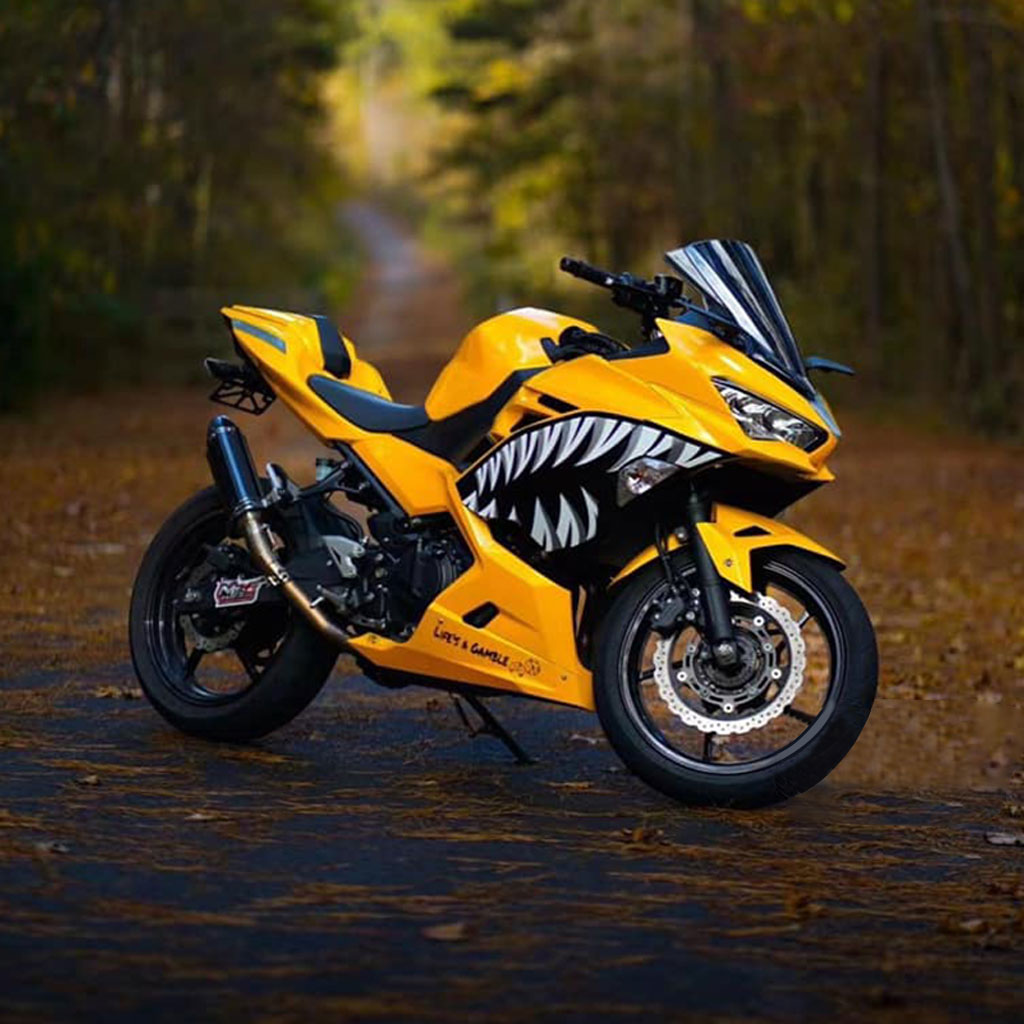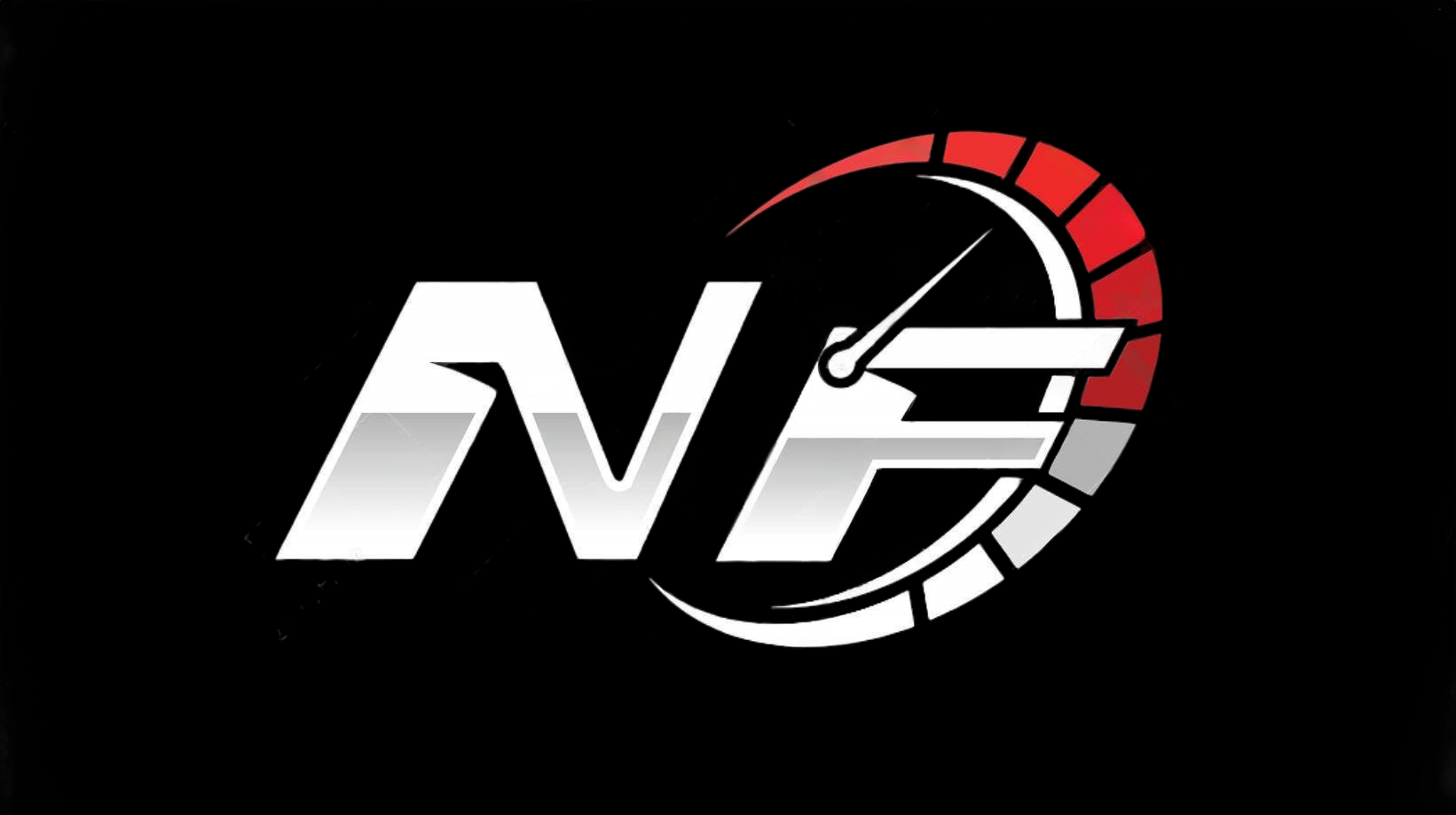What Is the Fairing on a Motorcycle and Why Does It Matter
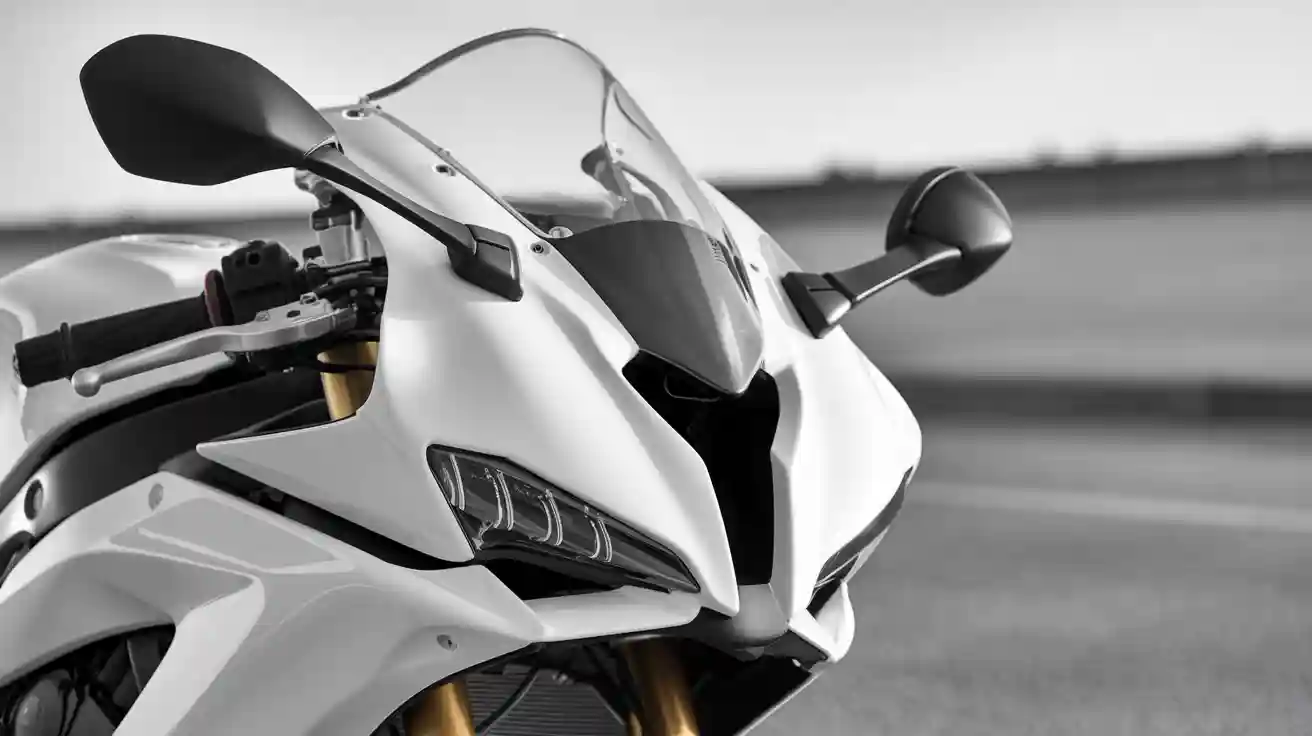
When you ask what is the fairing on a motorcycle, you look at the shaped panels that cover parts of the bike. These panels help you cut through the wind and protect you from weather. You might see a motorcycle with a fairing on the highway or in the city. What is the fairing on a motorcycle? It is a shield that shapes your ride. If you ride a motorcycle with a fairing, you notice less wind on your chest. What is the fairing on a motorcycle? It keeps you safer and helps your bike perform better. Many riders want to know what is the fairing on a motorcycle because it can change how you feel on the road. What is the fairing on a motorcycle? It makes a difference every time you ride.
Main Functions and Benefits of Motorcycle Fairings
Aerodynamics and Wind Protection
When you ride a motorcycle, you feel the force of the wind pushing against you. Fairings help you manage this wind. The panels on a fairing motorcycle are shaped to manipulate airflow and reduce wind resistance. This means you can go faster with less effort from your engine. Motorcycle fairings ensure better aerodynamics by lowering the drag coefficient. For example, scientific studies using Computational Fluid Dynamics show that a faired motorcycle has a much lower drag coefficient than a naked bike. The TVS Apache RR 310, a fully faired motorcycle, has a drag coefficient of only 0.26. This low number means you face less wind resistance and enjoy better aerodynamics.
Fairings also improve stability. When you ride at high speeds, the wind can make your bike shake or wobble. Motorcycle fairings ensure better aerodynamics by directing airflow smoothly around you and your bike. This reduces turbulence and buffeting. You get a smoother and safer ride. Full fairings create downforce, which helps your tires grip the road. You feel more control, especially when you ride fast or in windy weather.
Tip: If you want to ride comfortably at high speeds, choose a fairing motorcycle with full fairings for maximum wind protection and stability.
Rider Safety and Weather Shielding
Fairings do more than just help with speed. They also give you protection. When you ride, you face rain, dust, and flying debris. Motorcycle fairings shield you from these hazards. You stay safer and cleaner. The panels block cold air and rain, giving you weather protection. This means you can ride in different conditions without worrying about getting soaked or chilled.
Fairings also help with rider safety by reducing fatigue. Ergonomic studies show that fairings and windshields redirect airflow away from your body. You feel less wind pressure on your chest and arms. This makes long rides easier. You do not have to fight the wind, so your muscles do not get tired as quickly. Motorcycle fairings ensure better aerodynamics and comfort, helping you stay focused and alert on the road.
- Fairings protect you from flying rocks and bugs.
- They keep you dry in the rain.
- You feel less tired after long rides because fairings reduce wind buffeting.
Aesthetic Appeal and Customization
Fairings change the look of your motorcycle. You can choose colors, shapes, and finishes that match your style. Motorcycle fairings ensure improved aesthetics by giving your bike a sleek and modern appearance. Many riders like to customize their fairings with decals, paint, or special materials. Younger riders often pick holographic decals or color-changing finishes. Performance riders choose lightweight fairings made from carbon fiber for better aerodynamics.
Different regions have their own trends. North American riders like chrome-accented fairings for cruiser bikes. European riders prefer minimalist designs with advanced composites. Asian riders want practical and colorful fairings for city riding. Social media inspires many riders to personalize their bikes. Manufacturers now offer modular fairings and rapid prototyping, so you can get unique designs quickly.
- Aesthetic customizations attract design-driven riders.
- Comfort upgrades appeal to long-distance riders.
- Performance modifications are popular with sport bike fans.
Motorcycle fairings give you the freedom to express yourself while enjoying the key benefits of motorcycle fairing. You get better aerodynamics, protection, and style all in one package.
Types of Motorcycle Fairings
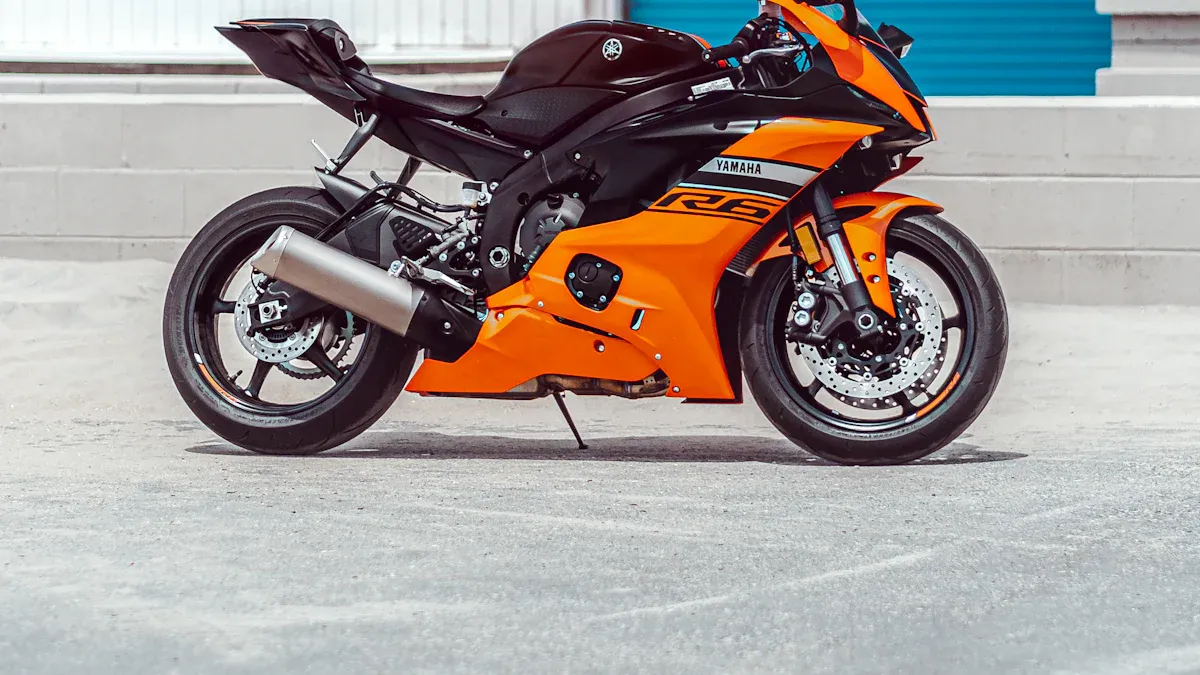
When you look at different types of motorcycle fairings, you see how each design changes your riding experience. Fairings shape the way air moves around your bike. They also protect you and your motorcycle from wind, weather, and debris. You can choose a fairing motorcycle that fits your needs by understanding the features of full, half, and quarter fairings.
Full Fairing
Full fairings cover almost every part of your motorcycle. You get protection for the front, sides, and even the rear fairing. These fairings include a windscreen, upper and lower side panels, and sometimes a tail fairing. You find full fairings on sport bikes and touring motorcycles. They became popular in the 1980s and 1990s because they improve aerodynamics and rider comfort.
- Full fairings reduce wind drag and help you go faster.
- You feel less tired on long rides because the fairing blocks wind and rain.
- Full fairings protect your engine, electronics, and side panels from damage.
- You get better fuel efficiency since the fairing motorcycle faces less air resistance.
- Many full fairings have built-in storage and GPS mounts for convenience.
Full fairings use materials like ABS plastic, fiberglass, and carbon fiber. These materials make the fairings strong and light. Bikes like the Kawasaki Ninja H2R and Ducati Panigale V4 use full fairings for high speed and stability. You also notice a sleek, aggressive look with full fairings.
Half Fairing
Half fairings give you coverage for the upper part of your motorcycle. You see protection for the headlight, handlebars, and instrument panel. The side panels shield your chest and arms from wind. Half fairings balance wind protection and weight. You get some aerodynamic benefits without making your bike heavy.
| Feature | Half Fairing | Full Fairing |
|---|---|---|
| Coverage | Covers upper portion: headlights, handlebars, instrument panel | Covers entire motorcycle body including upper and lower parts |
| Wind Protection | Minimal; short windscreen offers poor protection against wind, cold, and rain | Superior; provides excellent protection from wind, debris, bugs, and weather |
| Aerodynamics | Reduces drag and improves aerodynamics without adding much weight | Better aerodynamics, reduces drag more effectively |
| Weight | Lighter; does not add excessive weight | Heavier than half fairings |
| Rider Comfort | Some aerodynamic benefits but less effective in adverse weather | Enhanced comfort, especially for long trips and high speeds |
| Additional Benefits | Can be improved with taller windscreens and insulated gear | Improves fuel efficiency, reduces noise, protects electronics, and offers storage and accessories |
You might choose a half fairing motorcycle if you want a lighter ride and some wind protection. Half fairings work well for city riding and short trips. You can add taller windscreens or insulated gear for extra comfort.
Tip: If you want a fairing motorcycle that is easy to handle and not too heavy, try a half fairing.
Quarter Fairing
Quarter fairings offer minimal coverage. You see protection mainly for the headlight and instrument area. The side panels are small and do not cover much of the bike. Quarter fairings help you reduce wind drag and improve handling at high speeds. You get a classic, sporty look without blocking your view.
Quarter fairings work best for smaller motorcycles, especially cruisers and cafe racers. You get some wind protection for your upper body, but the rest of the bike stays exposed. Quarter fairings keep your motorcycle light and easy to maneuver. You can ride through mountain roads and tight turns with better visibility.
- Quarter fairings improve aerodynamics for the front of your bike.
- You keep the classic style and avoid extra weight.
- The tail fairing and rear fairing stay uncovered, giving you more freedom to customize.
When you compare different types of motorcycle fairings, you see how each design changes your ride. You can pick full, half, or quarter fairings to match your style and comfort needs.
Bikini Fairing
You see bikini fairings on many urban motorcycles and café racers. These fairings cover only the headlight and instrument cluster. You get a small shield from the wind, which helps a little with aerodynamics. Riders in cities often choose bikini fairings because they want a minimalist look and essential wind deflection. You do not get much protection compared to larger fairings, but you do notice less wind hitting your face at higher speeds.
- Bikini fairings provide minimal wind drag reduction.
- You find them on smaller motorcycles and bikes built for city riding.
- The focus stays on style and basic wind protection.
- You do not get the same aerodynamic efficiency or coverage as with full or half fairings.
If you want a lightweight motorcycle with a classic style, bikini fairings work well. You keep your bike easy to handle and maintain a clean, simple appearance. You do not have to worry about extra weight or bulky panels. You can still add a rear fairing for more customization, but most riders keep the look simple.
Note: Bikini fairings suit riders who value style and want just enough wind protection for short trips.
Touring Fairing
Touring fairings give you the most comfort and protection for long rides. You see these fairings on large touring motorcycles. The panels cover the front, sides, and sometimes the rear fairing. You get extended wind protection that reduces fatigue and keeps you comfortable for hours. Touring fairings often include built-in storage compartments, ergonomic seating, and features like GPS navigation or audio systems.
You notice padded seats and a riding posture designed for comfort. The fairings deflect wind away from your body, so you feel less tired. You can store tool kits, rainwear, water bottles, and overnight supplies in the compartments. Many touring motorcycles let you upgrade storage with extra accessories.
| Feature | Touring Fairing Benefits |
|---|---|
| Wind Protection | Shields face and upper body |
| Comfort | Padded seats, ergonomic posture |
| Storage | Built-in compartments |
| Accessories | GPS, audio, upgrade options |
Touring fairings also help you control your bike at highway speeds. The panels create aerodynamic downforce, which improves stability. You stay safer and enjoy a smoother ride, even in bad weather. You can add a rear fairing for extra storage or style.
Adventure and Dual-Sport Fairing
Adventure and dual-sport fairings help you ride on rough terrain and off-road trails. You get strong wind protection and better lighting for safety. Some fairings, like the Britannia Composites Lynx, offer a customizable dash for mounting navigation tools and gauges. You can adjust the windscreen for relief on pavement. The tough construction stands up to thousands of miles of off-road abuse.
You see crash bars and skid plates on many adventure motorcycles. These fairings protect the engine, oil pan, and exhaust header from rocks and impacts. The design keeps the bike maneuverable and lightweight, so you can handle tough trails. Powder coating adds surface protection and durability.
You get better visibility of navigation aids with an elevated dash. The fairings add some weight to the front suspension, but you gain more protection, lighting, and navigation support. You can add a rear fairing for extra gear or tools.
Tip: Adventure and dual-sport fairings give you confidence and safety for off-road riding.
Materials Used in Motorcycle Fairings
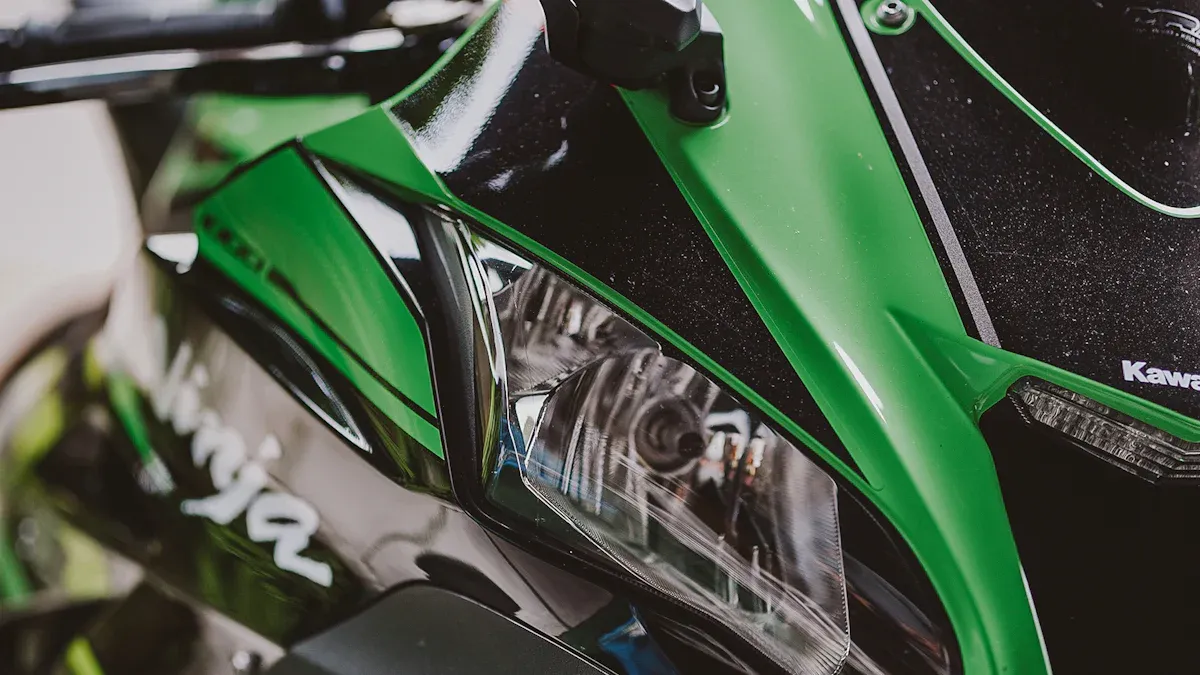
When you choose a motorcycle fairing, you need to know what materials make up these panels. The right material affects your ride, your safety, and the level of engine and parts protection you get. Most fairings use one of three main materials: ABS plastic, fiberglass, or carbon fiber. Each one offers unique benefits for different riding styles.
ABS Plastic
ABS plastic is the most common material for motorcycle fairings. You see it on many production bikes because it is affordable and easy to shape. Manufacturers use ABS plastic to create fairings with smooth lines and sharp angles. This material gives you good impact resistance and flexibility, which helps absorb shocks from road debris. ABS plastic also resists chemicals and heat, so your fairing lasts longer in tough conditions.
You might pick ABS plastic if you want a fairing that is easy to replace or modify. Riders who like to change the look of their bikes often choose ABS plastic fairings. However, once damaged, ABS plastic is hard to repair. If you ride less often or want a budget-friendly option, ABS plastic works well for you.
Note: ABS plastic fairings offer basic engine and parts protection, but they are not as strong as fiberglass or carbon fiber.
Fiberglass
Fiberglass fairings give you a balance between strength, weight, and cost. This material uses glass fibers mixed with resin to create a tough shell. You get better heat resistance and durability compared to ABS plastic. If your fiberglass fairing gets damaged, you can repair it instead of replacing the whole panel. This makes fiberglass a smart choice for touring or cruising riders who need long-lasting engine and parts protection.
Fiberglass fairings cost more than ABS plastic, but they last longer and handle rough weather better. You also get a fairing that does not corrode or degrade easily. Many riders choose fiberglass for custom builds because it is easy to shape and paint.
- Fiberglass fairings are lightweight and strong.
- You can repair them if they crack or chip.
- They provide solid protection for your engine and parts.
Carbon Fiber
Carbon fiber fairings stand out for their high performance. You find them on racing bikes and premium models. Carbon fiber is up to 70% lighter than standard plastics, which makes your motorcycle faster and easier to handle. The lighter weight improves acceleration, cornering, and fuel efficiency. Carbon fiber fairings also offer excellent heat resistance and durability, so they do not crack or warp easily.
| Advantage | Benefit for Riders |
|---|---|
| Weight Reduction | Faster acceleration and better handling |
| High Strength | Strong engine and parts protection |
| Heat Resistance | Keeps fairing shape near hot engine parts |
| Premium Appearance | Distinctive woven look and glossy finish |
You might see carbon fiber fairings in MotoGP or on custom sport bikes. These fairings give you the best aerodynamics and protection, but they cost more than other options. If you want top speed and a unique style, carbon fiber is the best choice.
Aluminum and Metal Alloys
You might see some motorcycle fairings made from aluminum or other metal alloys. These materials give you a strong and durable fairing. Aluminum stands out because it is lightweight and resists rust. When you choose a fairing with aluminum, you get a good balance between weight and strength. Metal alloys can handle rough roads and small impacts. You get more protection for your engine and other important parts.
Many adventure and touring motorcycles use aluminum fairings. You can ride for long distances without worrying about damage. Metal fairings also help with heat. Aluminum pulls heat away from your engine, so your bike stays cooler. This feature helps you if you ride in hot weather or on long trips.
Here are some reasons why you might pick an aluminum or metal alloy fairing:
- You want a fairing that lasts a long time.
- You need extra protection for off-road or adventure riding.
- You like the look of metal on your motorcycle.
- You want a fairing that can be repaired if it gets dented.
| Feature | Benefit for Riders |
|---|---|
| Lightweight | Easier to handle and maneuver |
| Strong | Better protection from impacts |
| Heat Dissipation | Keeps engine cooler |
| Rust Resistance | Lasts longer in wet conditions |
Note: Metal fairings can weigh more than plastic or carbon fiber. You might notice a heavier feel when you ride. Some riders like this solid feeling, while others prefer a lighter fairing for speed.
You can paint or polish aluminum fairings to match your style. Many custom builders use metal fairings for a unique look. If you want a fairing that gives you both style and protection, aluminum and metal alloys are a smart choice.
Why Fairings Matter for Riders
Impact on Performance and Speed
When you ride a motorcycle with a fairing, you often expect better speed and acceleration. Fairings shape the airflow around your bike and help reduce wind resistance. You might think every fairing boosts your top speed, but design matters. A rider tested a JPN fairing against a Ducati half fairing and no fairing on a BMW race bike. The JPN fairing made the bike slower by about 4-5 MPH. The rider found that the JPN fairing increased the frontal area by 6.5%. This larger area canceled out any aerodynamic gains. You learn that smooth airflow and less turbulence are key for performance. Not all fairings make your bike faster. You need the right shape and size. Does a fairing make a difference? Yes, but only when designed for speed.
| Fairing Type | Top Speed Change | Frontal Area Change |
|---|---|---|
| JPN Fairing | -4 to -5 MPH | +6.5% |
| Ducati Half Fairing | Baseline | Baseline |
| No Fairing | Baseline | Baseline |
Comfort on Long Rides
You feel the difference when you ride long distances. Fairings block wind from hitting your chest and arms. You stay relaxed and less tired. The panels shield you from cold air and rain. You get weather protection that keeps you comfortable. Many riders say a motorcycle with a fairing makes long trips easier. You do not have to fight the wind. Your muscles stay fresh. Does a fairing make a difference? Yes, you enjoy every mile more. You can focus on the road and scenery instead of battling the elements.
Tip: Choose a motorcycle with a fairing if you want less fatigue and more comfort on long rides.
Protection from Debris and Weather
Fairings give you strong protection against flying rocks, bugs, and rain. You get debris protection that keeps you safe. The panels act as shields. You avoid scratches and bruises from road debris. Impact protection helps your bike last longer. You also get weather protection, so you stay dry and warm. A motorcycle with a fairing lets you ride in different conditions. You do not worry about sudden storms or dusty roads. Fairings matter because they protect you and your motorcycle every time you ride.
- Fairings block rocks and bugs.
- You stay dry in the rain.
- Your bike gets extra impact protection.
Note: Fairings help you ride safely and comfortably, no matter the weather or road conditions.
Fuel Efficiency and Cost Savings
You might wonder how a fairing can help you save money when you ride your motorcycle. The answer comes down to fuel efficiency. When you add a fairing to your bike, you change the way air moves around you. The fairing reduces drag, so your engine does not have to work as hard. You use less fuel on every trip.
Many riders notice that a fairing helps them go farther on a single tank of gas. You spend less time and money at the pump. If you ride long distances, the savings add up quickly. A fairing can lower your fuel costs by up to 10% compared to riding without one. You get more miles for your money.
Let’s look at how a fairing affects your wallet:
| Feature | With Fairing | Without Fairing |
|---|---|---|
| Fuel Efficiency | Higher | Lower |
| Cost per Mile | Reduced | Increased |
| Engine Strain | Less | More |
| Long-Term Savings | Greater | Smaller |
You also save money on repairs. A fairing protects your engine and other parts from rocks and debris. You avoid costly damage. You spend less on maintenance over time.
Tip: If you want to lower your fuel bills and keep your motorcycle in good shape, choose a fairing that fits your riding style.
You do not need a racing bike to see these benefits. Even a simple fairing on a cruiser or touring motorcycle can make a big difference. You enjoy smoother rides, better fuel economy, and more money in your pocket.
Common Myths and Misconceptions About Fairings
Fairings Are Only for Sport Bikes
You might think that only sport bikes use a fairing, but this idea is not true. Many touring and cruiser motorcycles also have fairings. For example, Harley-Davidson Road Glide and Moto Guzzi California models use fairings to give you wind protection and comfort. Riders on Yamaha Roadliner, Victory Cross Country, and other touring bikes enjoy the benefits of both fork-mounted and frame-mounted fairings. These fairings help you stay comfortable on long rides and protect you from wind and rain. You see fairings on many types of motorcycles, not just sport bikes.
Fairings are common on cruisers and touring motorcycles because they improve comfort and shield you from the elements.
Fairings Make Bikes Harder to Handle
Some riders believe that a fairing makes a motorcycle harder to control. You might worry about steering or balance. Research shows that fairings can change how your bike handles, but the effect depends on the design and type. Fairings reduce air drag and improve stability at high speeds. However, they add surface area, which can make your bike more sensitive to crosswinds. Handlebar-mounted fairings may increase steering sensitivity, while frame-mounted fairings offer better stability. Heavier motorcycles handle crosswinds better with fairings than lighter bikes.
| Handling Factor | Impact of Fairing |
|---|---|
| High-Speed Stability | Improved |
| Low-Speed Maneuvering | May decrease due to added weight |
| Crosswind Sensitivity | Can increase |
You can choose a fairing that matches your riding style and needs. Many riders find that a well-designed fairing improves their ride.
Fairings Are Just for Looks
You may hear that a fairing only adds style to your motorcycle. This is not true. Fairings do make your bike look sleek and modern, but they also serve important functions. Fairings reduce wind drag, improve fuel efficiency, and protect you from debris and weather. They shield your engine and other parts from damage. Design experts say fairings help you ride faster, safer, and more comfortably. You can customize your fairing with colors and patterns, but you also get real benefits for performance and safety.
- Fairings improve aerodynamics and stability.
- They protect you and your motorcycle from wind, rain, and debris.
- You can personalize your fairing for style, but function comes first.
Fairings give you both style and substance, making your ride better in many ways.
Motorcycle fairings help you ride faster, safer, and more comfortably. They reduce wind resistance, protect you from rain and debris, and make your bike look unique. Studies show fairings improve speed, fuel economy, and stability. When you choose a fairing, think about your riding style and environment. Use this table to compare key benefits:
| Benefit | What You Get |
|---|---|
| Aerodynamics | Better speed, control |
| Protection | Safety, comfort |
| Customization | Style, fit |
Pick the fairing that matches your needs for the best riding experience.
FAQ
What is the main job of a motorcycle fairing?
A fairing helps you cut through the wind. It protects you from rain and flying debris. You also get better speed and fuel savings. Many riders choose fairings for comfort and safety.
Can you ride without a fairing?
Yes, you can ride without a fairing. You will feel more wind and may get tired faster. Your bike will not have as much protection from weather or road debris.
How do you clean a motorcycle fairing?
Use a soft cloth and mild soap. Rinse with clean water. Dry with a towel to avoid water spots. Do not use harsh chemicals. You keep your fairing looking new with regular cleaning.
Does a fairing fit every motorcycle?
No, not every fairing fits every motorcycle. You need to check the size and shape. Manufacturers make fairings for specific models. Always read the instructions before you buy or install a fairing.
See Also
Understanding Motorcycle Fairings And Their Functional Benefits
Evaluating The Advantages And Disadvantages Of Motorcycle Fairings
Comparing Nicefairings And Monsterfairings To Find The Best
Comprehensive Guide To Motorcycle Fairings And Their Uses
Nicefairings Offers Custom Motorcycle Fairings For Distinct Styles
